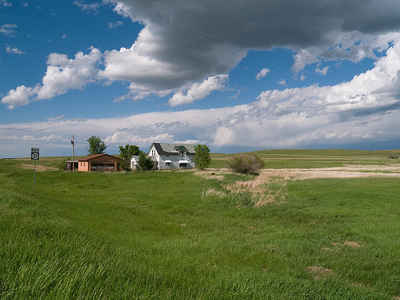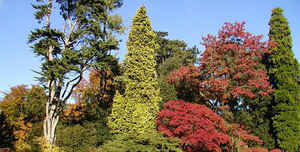North Dakota State Tree
American Elm
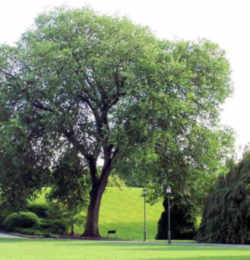
(Ulmaceae Ulmus americana)
Adopted in 1947.
The American or White elm, (Ulmaceae Ulmus americana,) is the largest species of elm. The American Elm was adopted in 1947 as North Dakota State Tree. Due to its graceful form and size, it was an extremely popular urban tree before the spread of Dutch elm disease. Once found mostly in eastern North America, remaining populations of mature American elms are concentrated in the American Midwest and Canadian Prairies. The American Elm often reaches 120 feet or taller.
North Dakota State Tree: American Elm
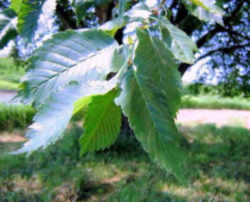
Ulmus americana, generally known as the American elm or, less commonly, as the white elm or water elm, is a species native to eastern North America, occurring from Nova Scotia west to Alberta and Montana, and south to Florida and central Texas. The American elm is an extremely hardy tree that can withstand winter temperatures as low as -42 °C (-44 °). Trees in areas unaffected by Dutch elm disease can live for several hundred years.
American elm is most notable for its susceptibility to the wilt fungus, Ceratocystis ulmi. Commonly called Dutch elm disease, this wilt has had a tragic impact on American elms. Scores of dead elms in the forests, shelterbelts, and urban areas are testimony to the seriousness of the disease. Because of it, American elms now comprise a smaller percentage of the large diameter trees in mixed forest stands than formerly. Nevertheless, the previously developed silvical concepts remain basically sound.
Common Names
American elm also known as white elm, water elm, soft elm, or Florida elm
Identification of the American Elm
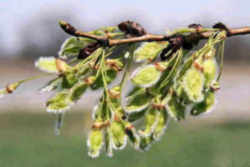
American elm is most notable for its susceptibility to the wilt fungus, Ceratocystis ulmi. Commonly called Dutch elm disease, this wilt has had a tragic impact on American elms. Scores of dead elms in the forests, shelterbelts, and urban areas are testimony to the seriousness of the disease. Because of it, American elms now comprise a smaller percentage of the large diameter trees in mixed forest stands than formerly. Nevertheless, the previously developed silvical concepts remain basically sound.
- Leaf: Alternate, 3 to 6 inches long, 1 to 3 inches wide; margin coarsely and sharply doubly serrate, base of leaf conspicuously inequilateral; upper surface glabrous or slightly scabrous, paler and downy beneath.
- Flower: Appears March to May before leaf buds open, in fascicles of 3 to 5.
- Fruit: Rounded samaras, 3/8 to 1/2 inch across, deeply notched at apex, hairless except for margin; appears April to May.
- Twig: Slender, glabrous, slightly zigzag, reddish-brown; buds over 1/4 inch long, reddish-brown with darker edged scales, often placed a little to one side of the twig.
- Bark: Dark, ashy-gray, flat-topped ridges separated by diamond-shaped fissures; outer bark when sectioned shows distinct, alternating, buff colored and reddish-brown patches. When young it is often quite spongy.
- Form: In the open, the trunk is usually divided into several large, ascending and arching limbs, ending in a maze of graceful drooping branchlets.
North Dakota Law
The law designating the American elm as the official North Dakota state tree is found in the North Dakota Revised Statutes, Title 54, Chapter 54-02, Section 54-02-05
Title 54 State Government
CHAPTER 54-02 STATE EMBLEMS, SYMBOLS, AND AWARDS
54-02-05. State tree. The American elm, ulmus americana, is the official tree of the state of North Dakota.
Taxonomic Hierarchy: American Elm
Kingdom: Plantae - Plants
Subkingdom: Tracheobionta - Vascular plants
Superdivision: Spermatophyta - Seed plants
Division: Magnoliophyta - Flowering plants
Class: Magnoliopsida - Dicotyledons
Subclass: Hamamelididae
Order: Urticales
Family: Ulmaceae - Elm family
Genus: Ulmus L. - elm
Species; Ulmus americana L. - American elm





